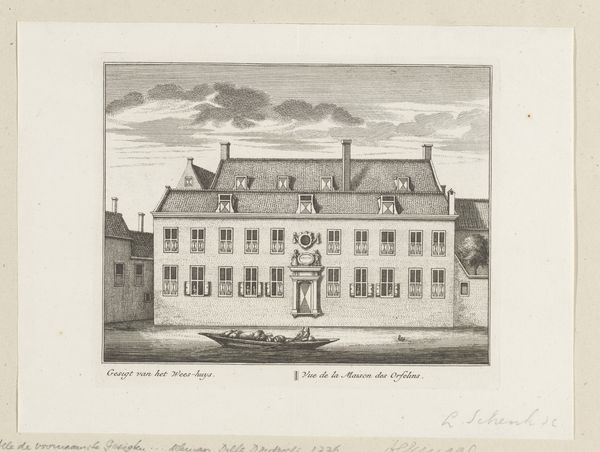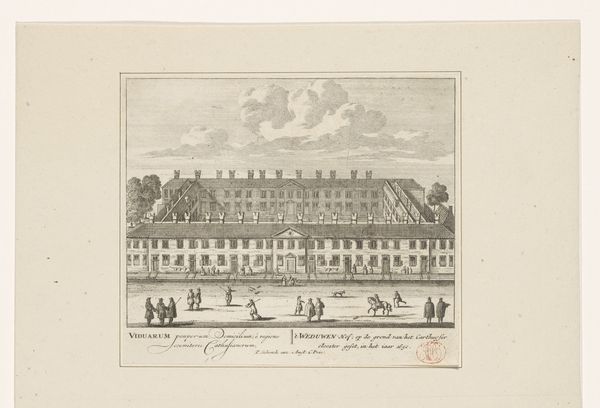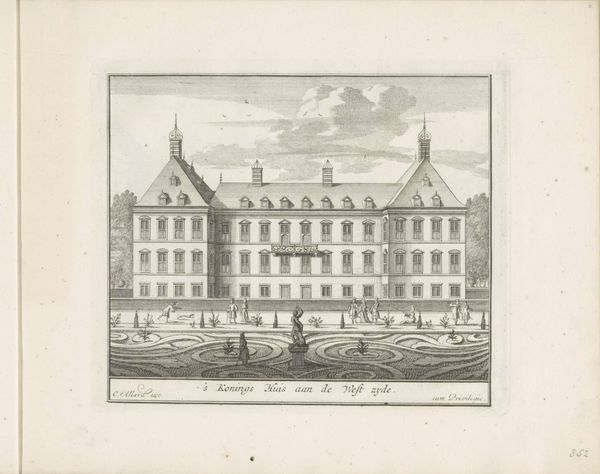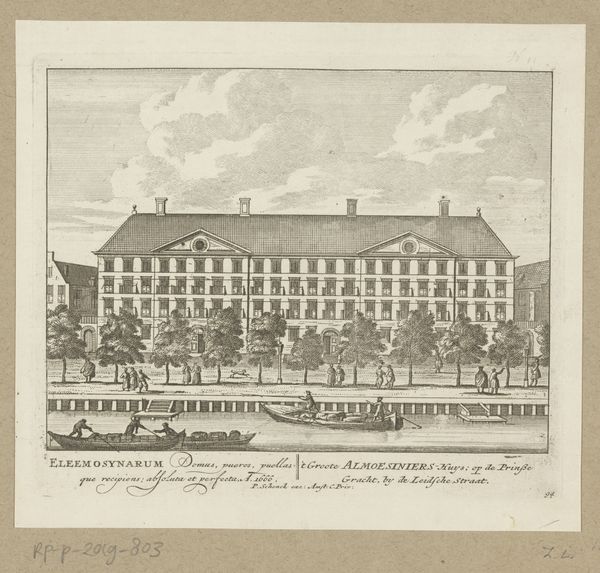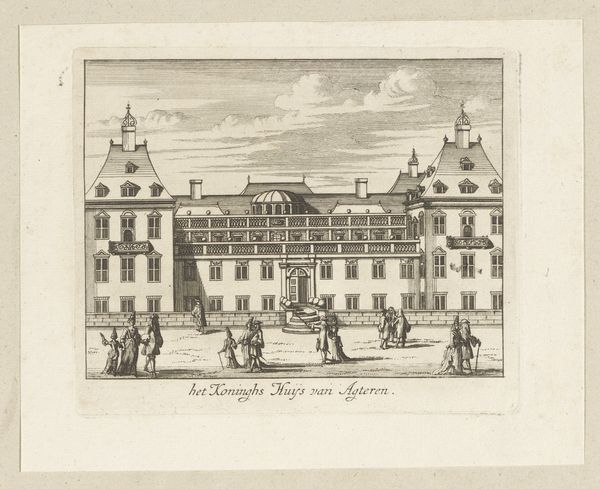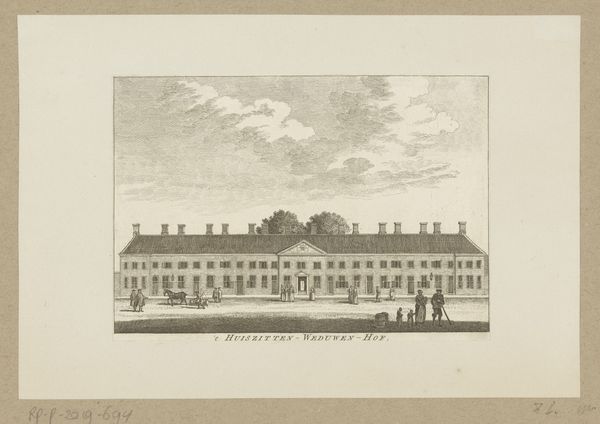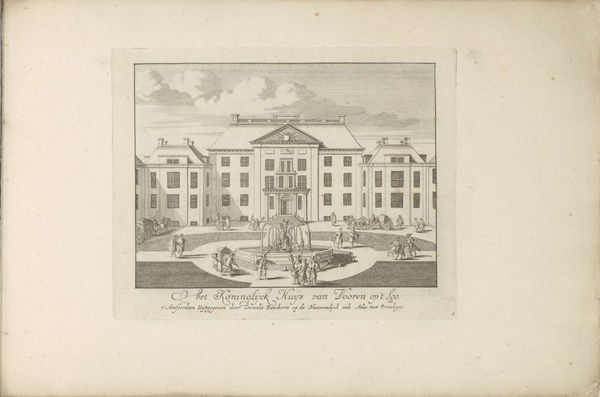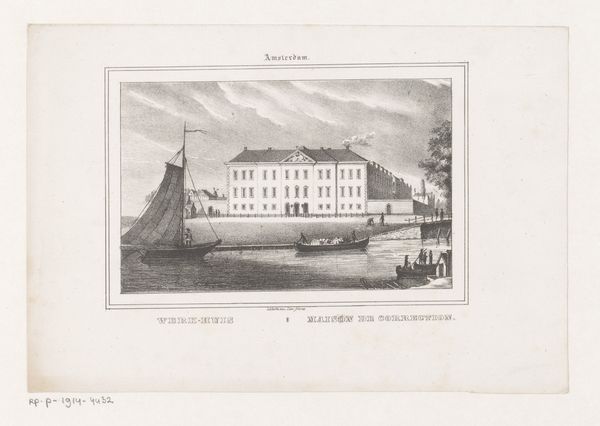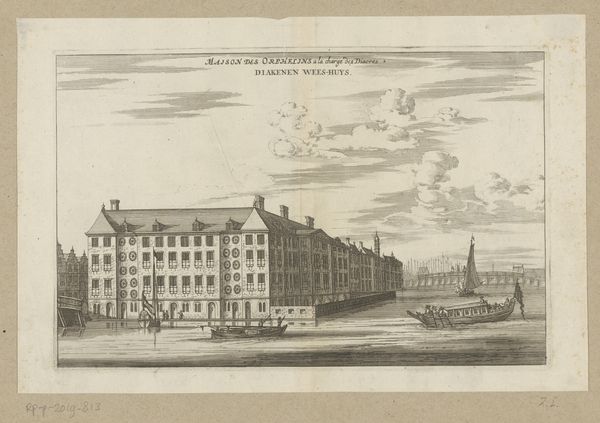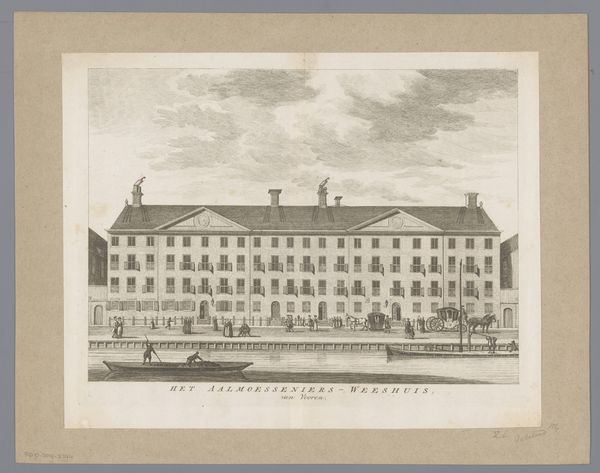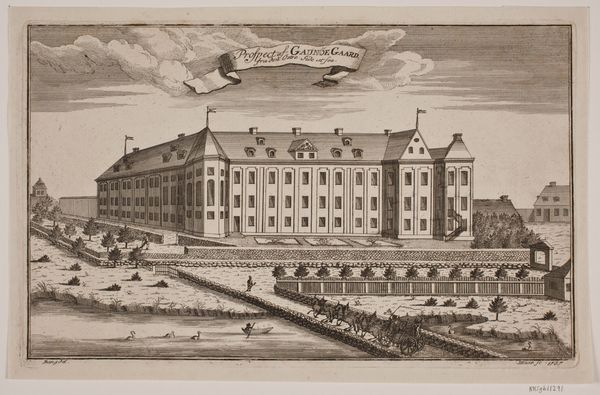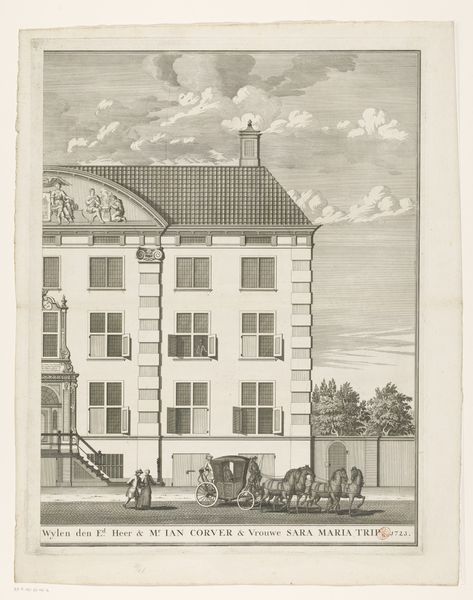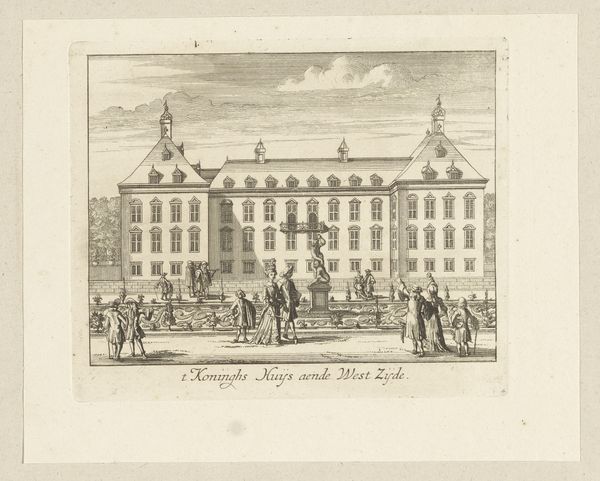
drawing, print, engraving, architecture
#
drawing
#
dutch-golden-age
# print
#
landscape
#
cityscape
#
engraving
#
architecture
#
realism
Dimensions: height 111 mm, width 138 mm
Copyright: Rijks Museum: Open Domain
Curator: Jan Veenhuysen created this cityscape called "Gezicht op de achterkant van het Diaconieweeshuis te Amsterdam" around 1664. It's currently held at the Rijksmuseum. Editor: Immediately, I'm struck by its stoic stillness, a sense of quiet order permeating the print, reinforced by the crisp, clean lines of the architecture itself. Curator: Indeed. That rigid symmetry contributes to the overall effect. Consider how the orphan house, "Diaconieweeshuis," is represented not merely as a structure, but almost as a fortress of social order and religious doctrine. The rows of windows become like watchful eyes, silently overseeing the canals. Editor: I notice that, compositionally, it’s dominated by horizontal lines. It creates a strong grounding, very stable. The water mirrors the regularity of the architecture. The light and shadow add a subtle rhythm but respect the flat plane of the picture, really. Curator: Absolutely. And it speaks to the Dutch preoccupation with civic virtue and charitable duty. Note also the boats navigating the waters. The imagery suggests the continuous life and activity of Amsterdam, even as it juxtaposes with the implied sanctuary of the orphanage. The swans add an additional dimension of purity and serenity to the imagery. Editor: The regularity of form is undeniable. What really resonates with me is the sense of craftsmanship in Veenhuysen's handling of line and form here. There's a precision to his technique. It’s not just a depiction of a building, but also a study in geometrical clarity. It's not attempting to create a perspectival illusion so much as establish formal equivalencies within its bounded frame. Curator: Which makes it a valuable visual record of a specific moment, but also an encapsulation of societal ideals. In many ways the visual order here mirrors an ideal of social order. Editor: It is very neat, and this deep-dive allows a contemplation of architecture as a system in itself. Curator: Precisely. An order manifest in ink on paper, mirrored in brick and canal, resonating across the centuries.
Comments
No comments
Be the first to comment and join the conversation on the ultimate creative platform.
